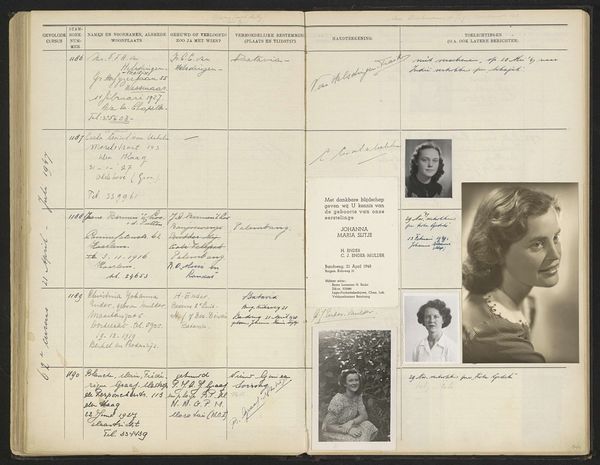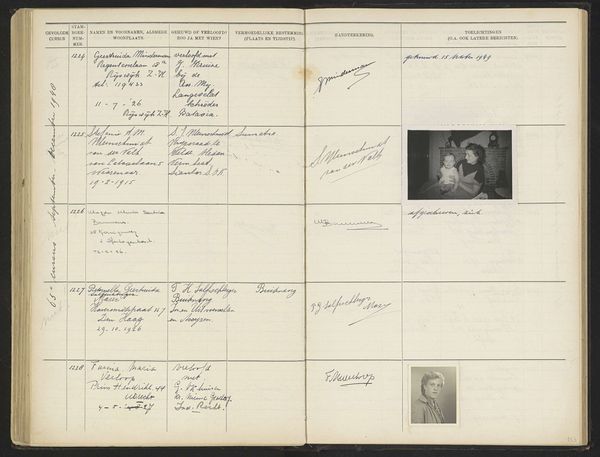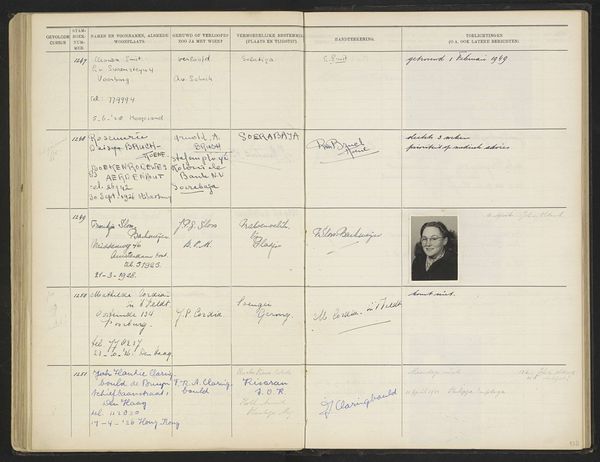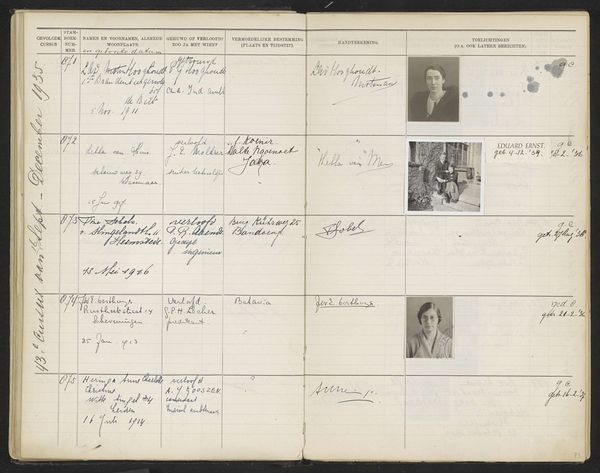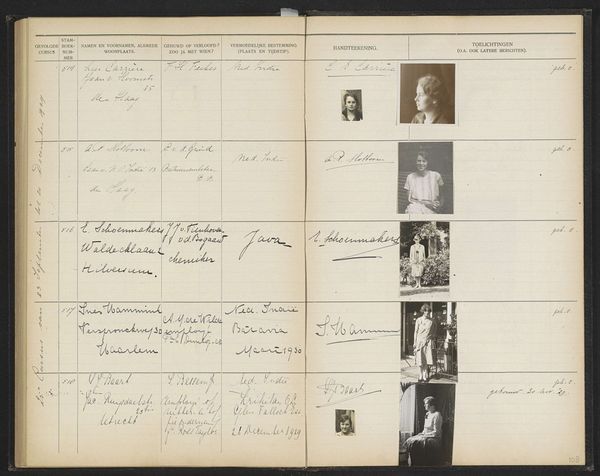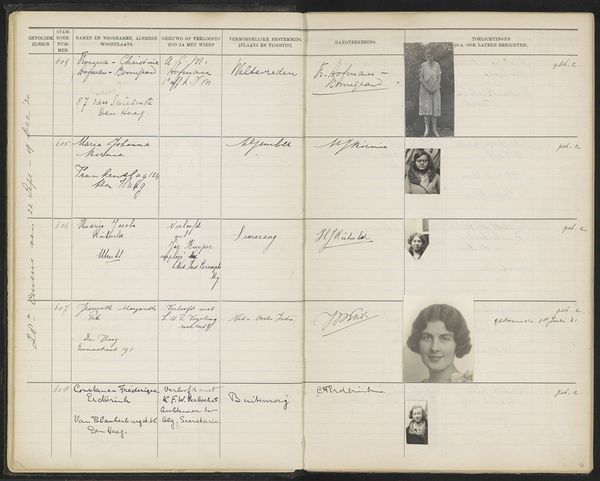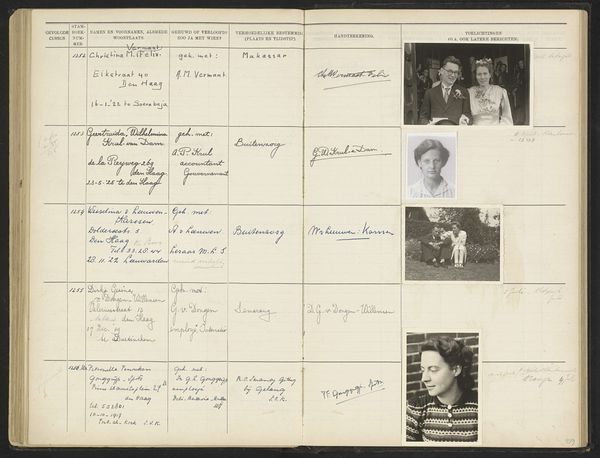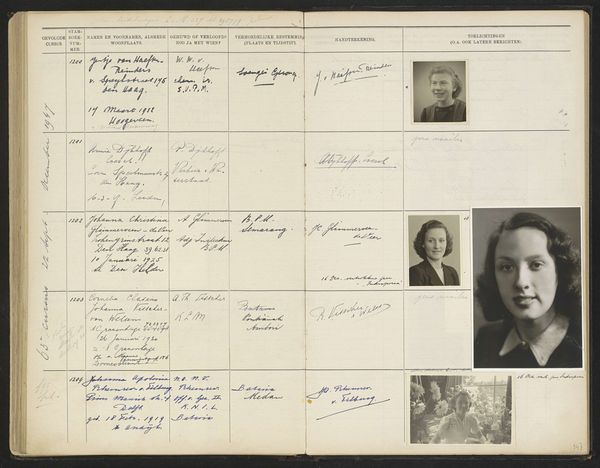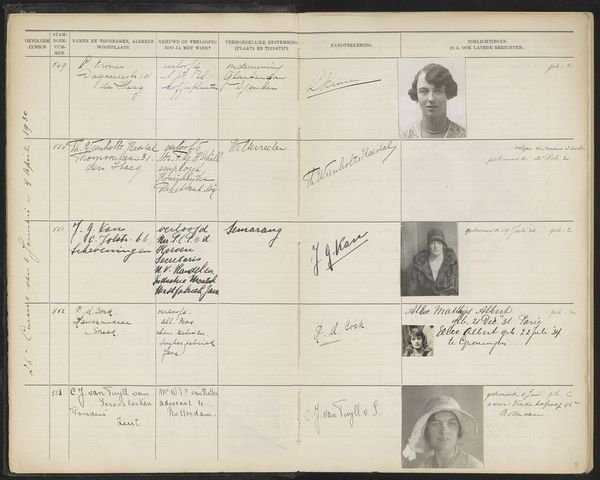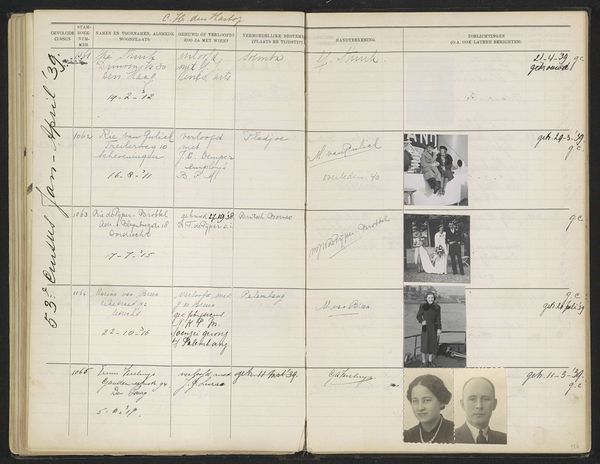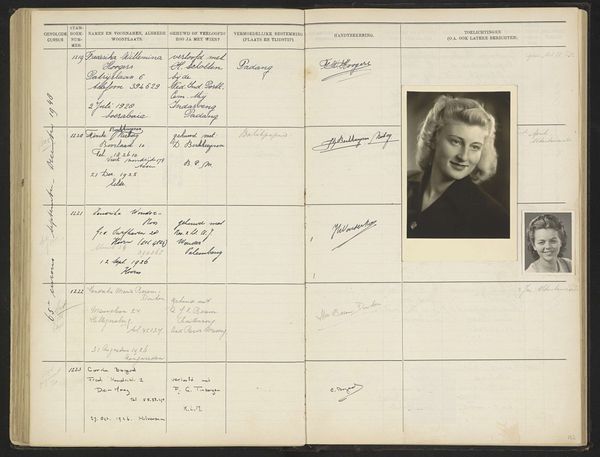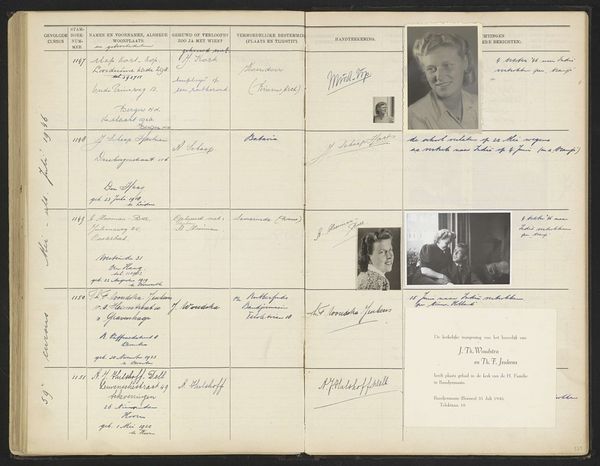
Blad 146 uit Stamboek van de leerlingen der Koloniale School voor Meisjes en Vrouwen te 's-Gravenhage deel II (1930-1949) Possibly 1947 - 1949
0:00
0:00
mixed-media, print, textile, paper, photography
#
portrait
#
mixed-media
# print
#
textile
#
paper
#
photography
Dimensions: height 337 mm, width 435 mm
Copyright: Rijks Museum: Open Domain
Editor: Here we have page 146 from "Stamboek van de leerlingen der Koloniale School voor Meisjes en Vrouwen te 's-Gravenhage deel II (1930-1949)," dating probably from the late 1940s. It seems to be a mixed-media piece, combining print, photography, textiles, and paper. Looking at it, I see this really stark juxtaposition of formal records with personal photographs, which creates an intriguing mood of institutional control over individual lives. How do you interpret this work? Curator: It's fascinating how this ledger format – usually reserved for bureaucratic recording – is interlaced with photographic portraits. It prompts us to think about the girls and women named, placed, and categorized within this colonial archive. How might we read this 'Stamboek' through a postcolonial lens, considering the power dynamics at play? Editor: Well, it looks like this school trained women for colonial service. The very act of recording their identities suggests a project of controlling their roles in the colonial system, right? Curator: Precisely. Consider the intersection of gender, colonialism, and institutional power. The women's identities are literally being inscribed into the colonial project. Where were they sent after their studies? And how might their personal aspirations have aligned, or conflicted, with their designated roles within the colonial structure? Editor: The locations listed -- "Batavia", "Padang", "Semarang" -- remind us of the vast geographical reach of Dutch colonialism. The ledger then becomes not just a record of individuals but also a register of colonial expansion and governance. Do you think the mixed media hints at a struggle to document the full complexity of this story? Curator: It gestures towards that tension. The official printed form tries to fix identities, but the addition of personal photographs and signatures suggests an attempt to retain individual agency within the system. What does this combination of media signify in relation to the school's larger goals? Editor: I see now, the "Stamboek" becomes more than just a list; it reveals the human stories, ambitions, and constraints embedded within a system of colonial power and gendered expectations. Curator: Exactly. Thinking critically about how institutions document and control identities – especially in colonial contexts – remains acutely relevant today.
Comments
No comments
Be the first to comment and join the conversation on the ultimate creative platform.
